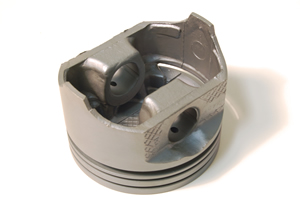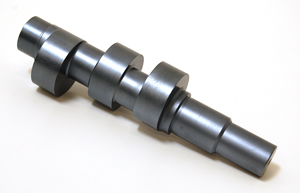Automotive

Tungstenite (WS2) is the most effective on the high and low end of the engines performance. By reducing wear on the low end and increasing horse power on the high end.
Applied Tungstenite has been use for years in the primary and secondary automotive marketplace. Applied Tungstenite will improve the viscosity of the primary lubricant, reduces wear, heat on internal engines parts, and transmissions.
Tungstenite in an Internal Combustion Engine
Piston Rings
Tungstenite (WS2) works on the Piston rings to reduce or eliminate micro welding to extend the life of the ring, in addition to providing a slippery surface to increase the effectiveness of the engine oil.

Piston Head
Tungstenite (WS2) is applied on the Piston Head to reduce the friction of the initial startup, and warm-up period of the engine. By increasing lubrication for the rings and connecting rod.
Camshaft
The Camshaft in a cold engine is essentially sitting without oil on it so when the engine starts it's starting an un-lubricated part. This is when the camshaft is subjected to the most amount of wear. Tungstenite (WS2) eliminates this problem because the Tungstenite is impinged on the camshaft so it is never without lubricant.

Racing Engines
When Tungstenite (WS2) was applied to the main bearings, cam & crank shafts, rod bearings, wrist pins, and pistons in engines used in NASCAR and 24 endurance racing. There was a reduction in operating temperature of 10%, there was almost no wear on the coated components and there was increase power on the top end.
WS2 Technical Information
Composition:
A single layer of modified Tungsten Disulfide .5 microns thick
Molecular weight of 248.02
Density of 7.4 gms/cc
Hardness of 30 Rockwell C
Non-magnetic
Uniform silver-gray in color
Substrates:
All ferrous and non-ferrous metals and selective manmade solids and plastics.
However, the harder the substrate, the better the bond.
Adhesion:
High velocity impingement applied at ambient air temperature.
No cure time required
No binders or additional adhesives
Temperatures Range:
-460°F to 1200°F (-273°C to 650°C) in normal atmosphere
-360°F to 2400°F (-188°C to 1316°C) in hard vacuum
Load Capacity/Pressure:
Same as substrate to 100,000 psi
Coefficient of Friction:
Dynamic 0.035 Static 0.07
Coefficients lower then .05 are attainable but will vary with humidity
Chemical Stability:
Inert, non-toxic and non-corrosive
Accepts petrochemical oils and greases, synthetic oils, silicone lubricants and hydraulic fluids.
Does not prevent corrosion of substrate
Lox Compatibility:
Insensitive to detonation by or in the presence of oxygen
